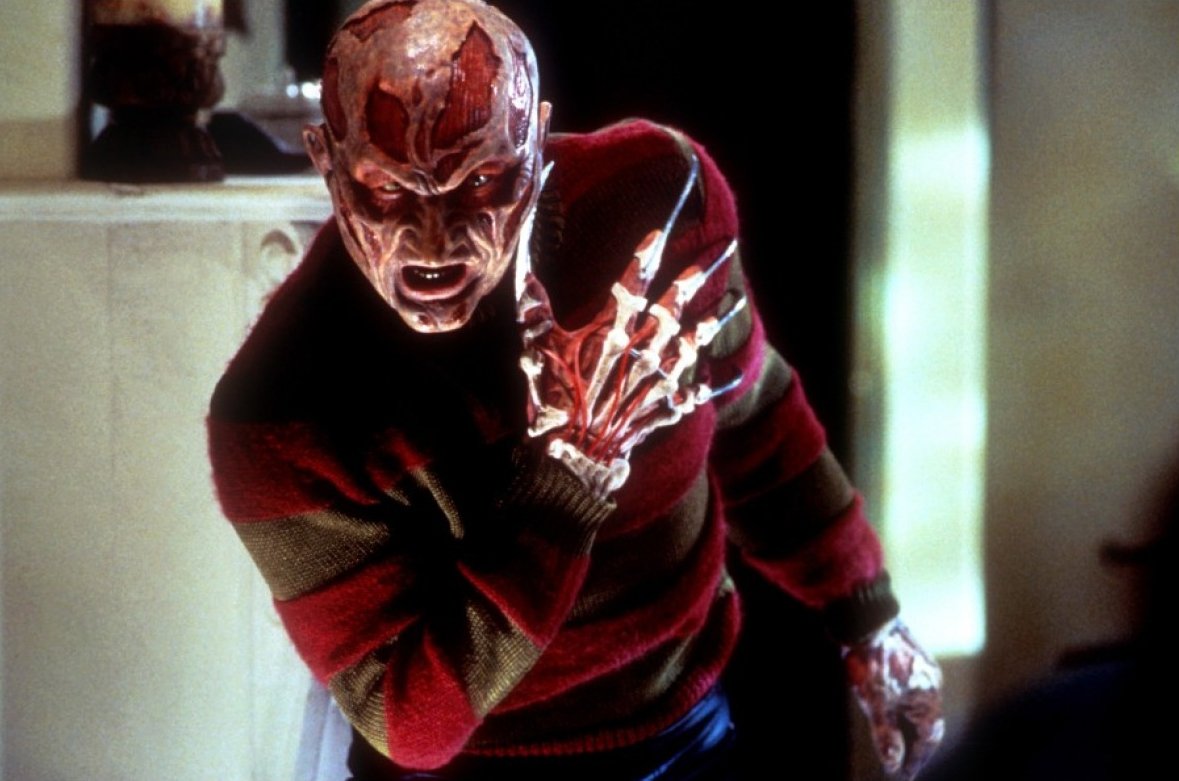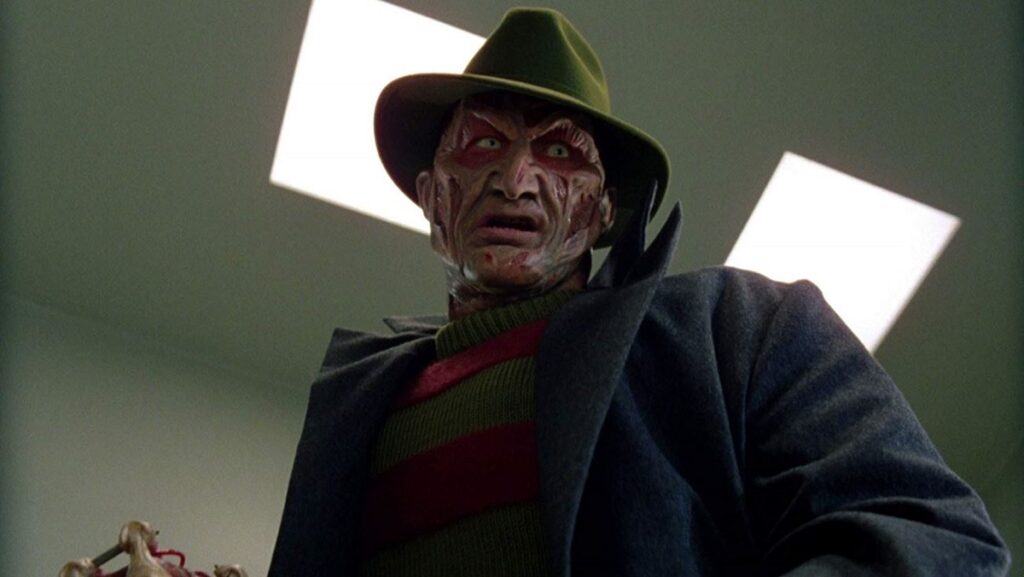Despite a long absence from movie screens, 2024 is a big year for Freddy Krueger. It marks the 40th anniversary of A Nightmare on Elm Street. But that’s not the only major milestone for the razor gloved villain. It’s also the 30th anniversary of the seventh film in the A Nightmare on Elm Street‘s franchise, Wes Craven’s New Nightmare. It’s rare there’s much to laud about Part 7 of any long-running series. But New Nightmare is unique in that regard. In fact, when it opened, New Nightmare felt unique for any horror movie in history. It broke ground in how meta it was at a time when few knew the term meta, much less understood what it meant. Three decades later, no other film franchise has ever fully replicated what New Nightmare did.
New Nightmare is Writer/Director Wes Craven’s first (and only) true full return to the franchise he created since the 1984 original. (Yes, he co-wrote early drafts of the third film, 1987’s A Nightmare on Elm Street: Dream Warriors before departing the project.) And it is far from a typical sequel. It features returning stars Robert Englund and Heather Langenkamp playing themselves. They are the Los Angeles-based actors who’d starred as Freddy Krueger and Nancy Thompson. The story is about how an ancient, evil entity is manifesting itself into the real world in the form of a Freddy, a fictional character.
Suffice to say, it was a bold and wild entry in the series. New Nightmare got some strong reviews, but it also was a notable box office failure. The horror sequel came in third place behind the simultaneous debut of the sensation that was Pulp Fiction. It was also the second weekend of the Sylvester Stallone / Sharon Stone film, The Specialist.
These days, you’ll find a lot more people talking about New Nightmare than The Specialist, and for good reason. New Nightmare felt like a victim of bad timing, thanks to its release date and the overall exhaustion with the Elm Street franchise. Who can forget those previous weak entries that culminated with a movie literally called Freddy’s Dead? However, it was a notably audacious and clever film. New Nightmare let Craven to hold a mirror up to the Freddy movies and their popularity in a way few could have conceived beforehand.
Horror is a genre filled with tropes and stylistic markers. So there’s long been a tendency to get self-reflective when it comes to horror. That means New Nightmare certainly isn’t the first meta horror film. For example, 15 years after 1931’s Dracula marked the debut of the Universal Monsters into the sound era of films, that franchise took a turn for the wacky with 1946’s Abbott and Costello Meet Frankenstein. The latter provided a much more winking take on some of the studio’s most beloved and, traditionally, fearsome characters.
On the far more dramatic side was 1960’s Peeping Tom, which was critically reviled initially but has been embraced since. Peeping Tom feels ahead of its time with its knowing, shrewd depiction of a killer who voyeuristically films his murders. The killer’s POV footage uncomfortably puts the audience in the murderer’s perspective. But it also leaves much to ponder about the lurid appeal of watching people die onscreen.
Then in 1981, in the midst of the slasher movie craze brought about by Halloween and Friday the 13th, came the insta-parody that was Student Bodies. Its virginal high school final girl dealing with a whodunnit murder mystery (including an onscreen body count listing) feels like the much cruder, less refined version of Wes Craven’s own Scream would accomplish in terms of deconstructing and having fun with the tropes and clichés of slashers.
Yet still, none of those earlier projects were operating at the all-in level New Nightmare was. Craven wasn’t taking a previously dramatic film franchise and leaning into comedy. Nor was he pointing out aspects that recur in the genre at large. Instead, he was telling a hyper-focused story about one particular series and its reception and evolution over time. These days, moviegoers are familiar with films like Deadpool & Wolverine, which makes meta jokes about both the state of the MCU itself or the personal lives of the stars of the film. But Craven’s decision to bring Freddy back, not with a standard new chapter but by entirely upending what to expect from the movie and even what reality it took place in, was completely unexpected.
New Nightmare is essentially Craven saying, “Yeah, I know you guys grew up watching Freddy movies – including all the ones I didn’t make. Here’s a movie about how familiar and harmless this series has become and the danger of that familiarity.” In New Nightmare, we see Langenkamp’s “Heather” character interact with fans and her own legacy as a horror movie scream queen. Meanwhile, the mainstream popularity of Freddy is omnipresent. He appears as a talk show audience, wears Elm Street cosplay, cheers on a surprise appearance by Englund in his Freddy movie makeup, and is repeating his own dialogue from the sequels. And when Heather’s young son begins to act troubled, the doctor examining him is instantly suspicious that Heather has let him watch the Nightmare movies. He believes that the films are a bad influence on children.
In a very funny moment, Heather angrily replies to the doctor, “Every kid knows who Freddy is! He’s like Santa Claus or King Kong.” And indeed, Freddy was a major figure in pop culture at that point. Craven clearly has his own issues to sort through in New Nightmare about where the series went after his first film. Freddy became a much more comedic, less intimidating character and the source of a ton of merchandise. (Offscreen, Craven felt New Line Cinema hadn’t done right by him financially. That situation got a resolution before his return for New Nightmare).
In a scene that could have been very embarrassing if it were in lesser hands, Craven, playing himself, lays out what’s happening to Heather. He reveals how certain stories can capture this ancient, evil being, keeping it prisoner. It’s pretty obvious what Craven is referring to, in terms of Freddy’s trajectory, when he says the story becoming too familiar or watered down are ways this hold can be broken, freeing this evil.
The Wes Craven character is having nightmares, moments he’s writing into a script that are exactly the horrific events Heather is experiencing. Heather eventually travels to a subterranean hell to fight and defeat this version of Freddy. In the end, when she returns to the real world, she has Wes’ script with her. The evil is under control again through the power of a good horror movie… the one we’re watching, specifically.
New Nightmare‘s Impact on Horror and Beyond

In 2024, some might roll their eyes at how self-reflective and inward facing New Nightmare is. This is especially true because meta is a go-to storytelling method now that feels familiar. Yet this was new and fresh in 1994. I remember audience members gasping at the cut from Craven’s speech to Heather to his computer screen, showing he’d been typing their conversation into his script already.
We’ve now come to a point where New Nightmare’s approach is short term for horror fans. You’ll sometimes see Scream fans suggest a new sequel should “Pull a New Nightmare” and have the legacy cast playing themselves rather than their characters. And one of Freddy vs. Jason’s many, many scripts during its path through development hell also took a similar approach with Jason Voorhees. It made him a real life killer who a popular series of films were based on. But doing this sort of thing with another big horror franchise would be difficult to replicate without feeling like a pale imitation, given what Craven accomplished. (No, Seed of Chucky saying Chucky’s murders eventually lead to a movie being made about him within the film’s universe is not the same thing. That’s a very different take on a Hollywood self-parody.)
Two years after New Nightmare’s box office failure, Craven would find huge success with 1996’s Scream, which was itself a slasher movie deconstruction. But that film has a notable comedic bent and is about the genre at large, not just one series. Looking back, New Nightmare feels like the crucial steppingstone between Craven’s work on the original A Nightmare on Elm Street and on Scream. Yet it’s also a movie that stands on its own in terms of taking an iconic movie monster back to his roots in a way no one could have imagined… and reminding audiences it really does all start with the script.




